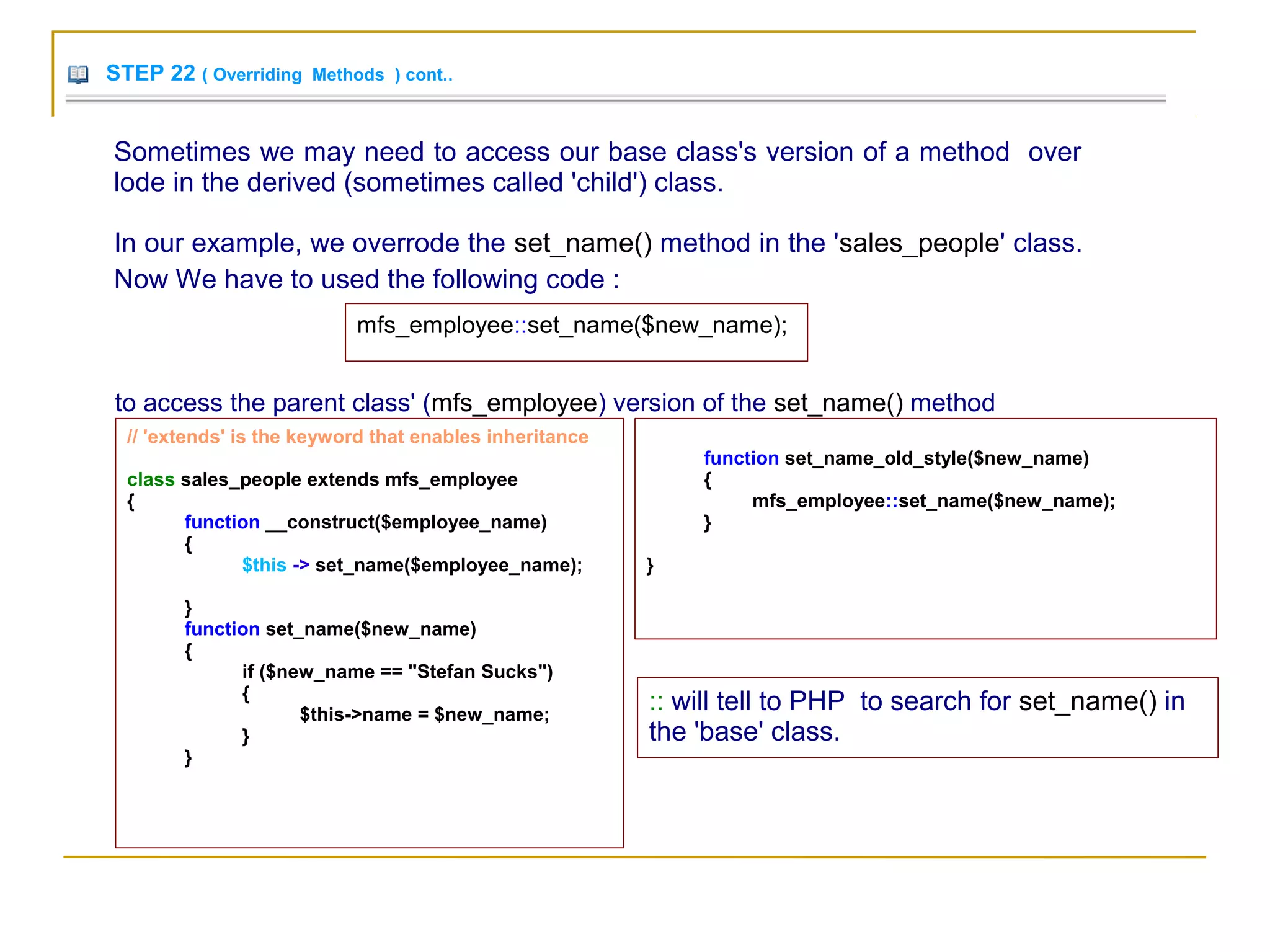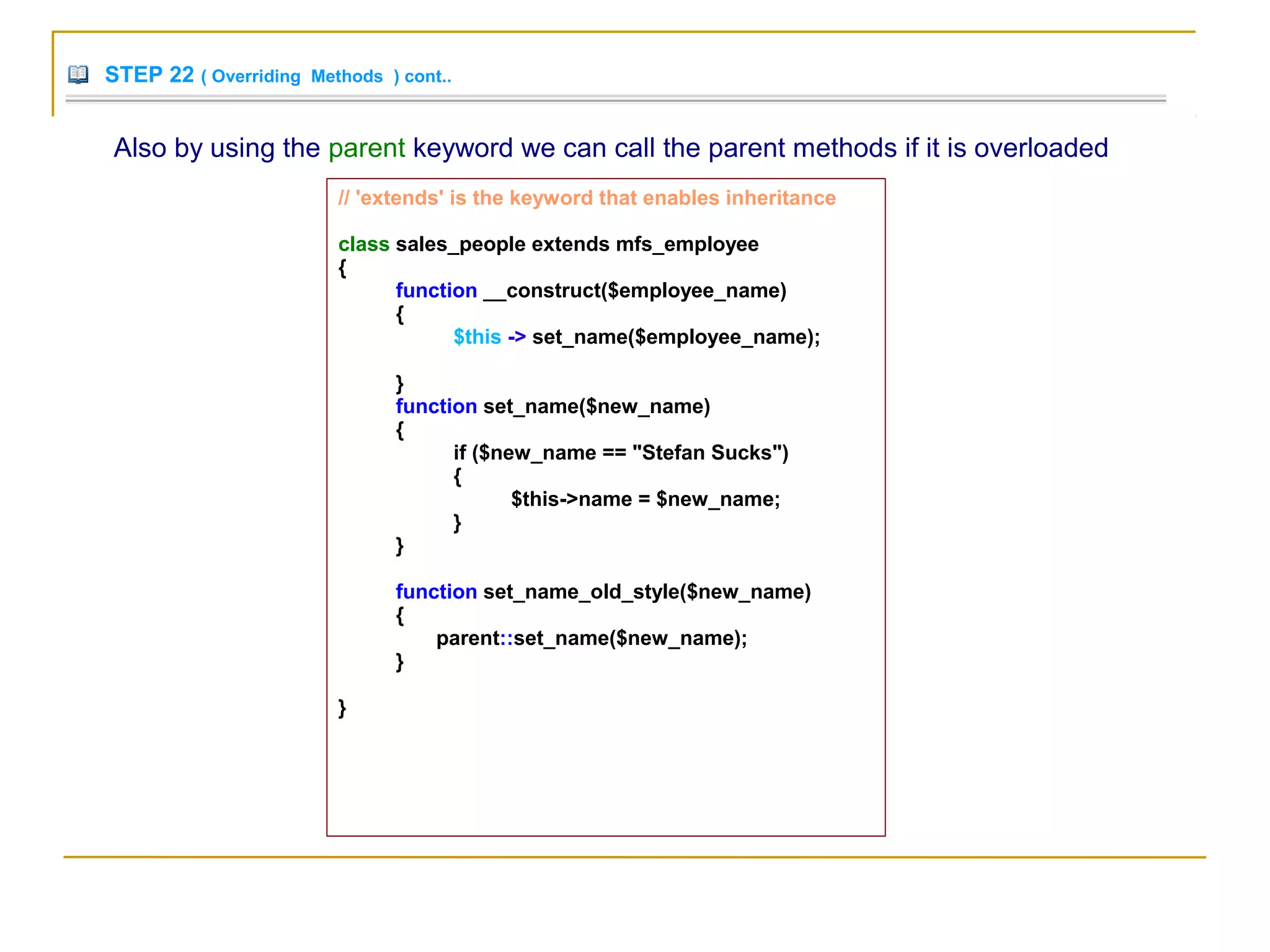The document discusses object oriented concepts in PHP. It provides 22 steps for developing an application using object oriented principles in PHP. Some key points covered include:
- Creating PHP classes to organize code into reusable blueprints
- Defining properties and methods within classes
- Instantiating objects from classes and accessing object properties and methods
- Using constructors to initialize properties when objects are created
- Implementing getter and setter methods to encapsulate property access
- Applying access modifiers like public, private, and protected to restrict property and method access
The steps provide a guide for designing classes, creating objects, setting and getting property values, and controlling access to properties and methods through access modifiers. This allows for developing PHP applications

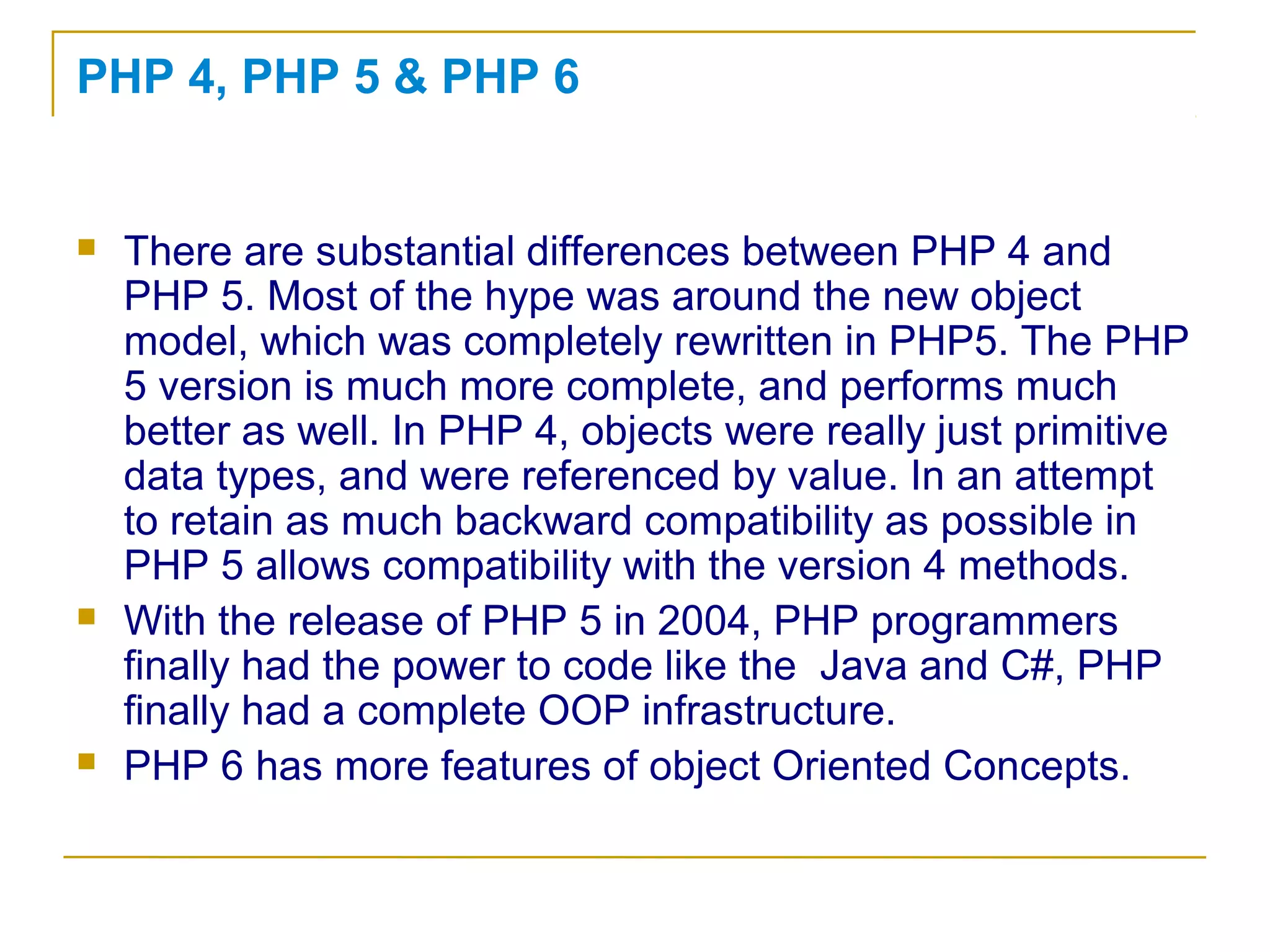
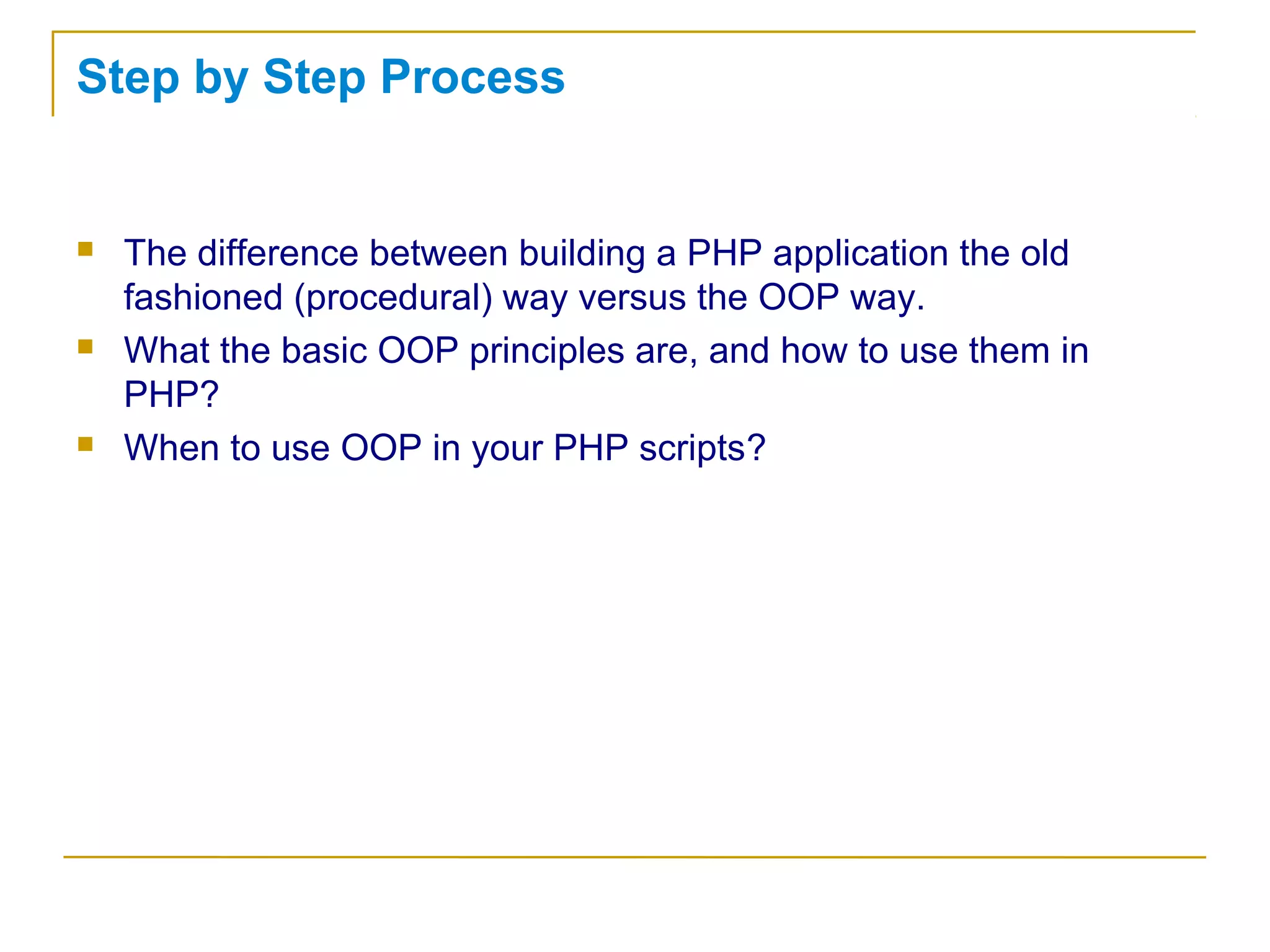
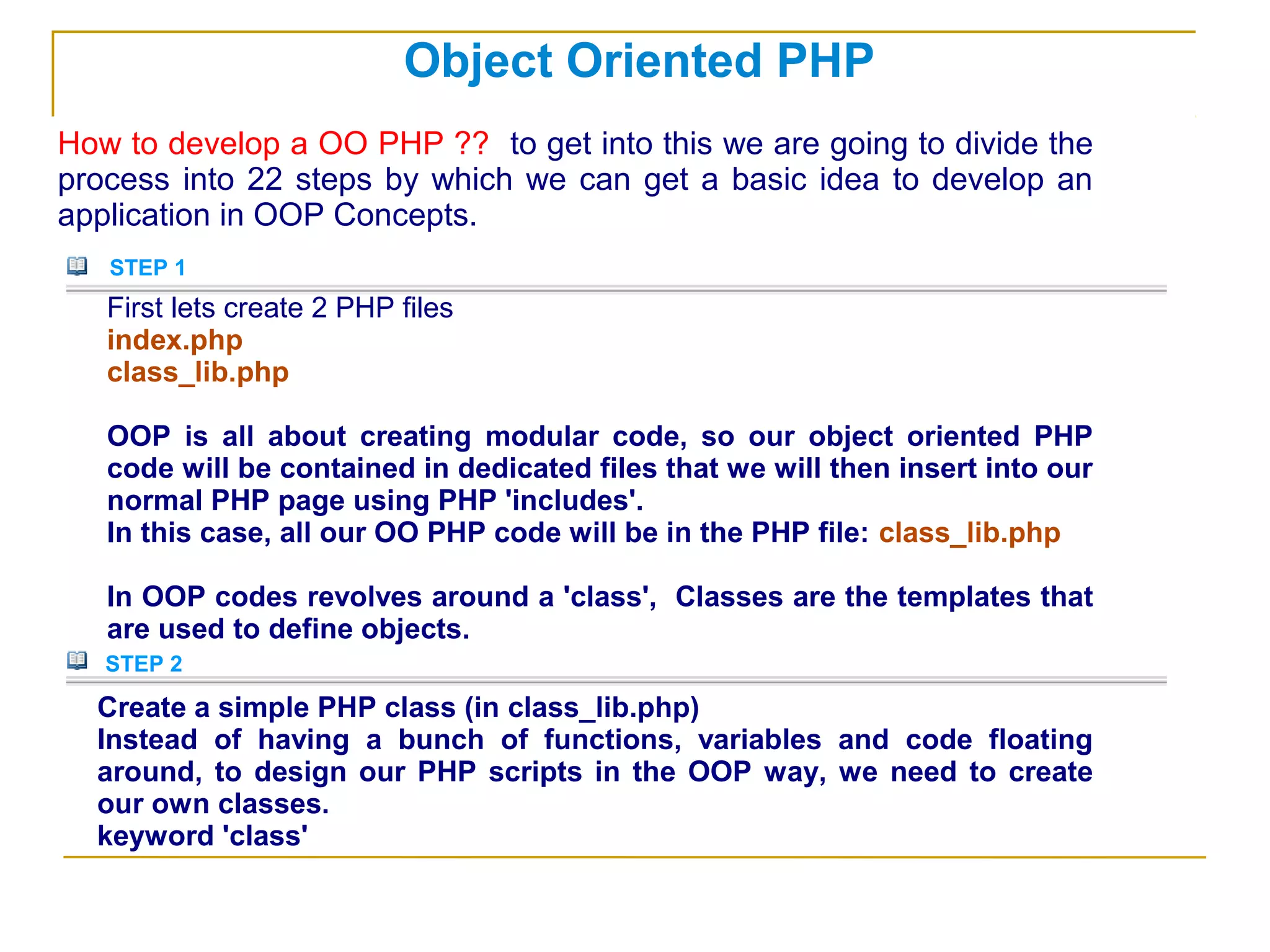

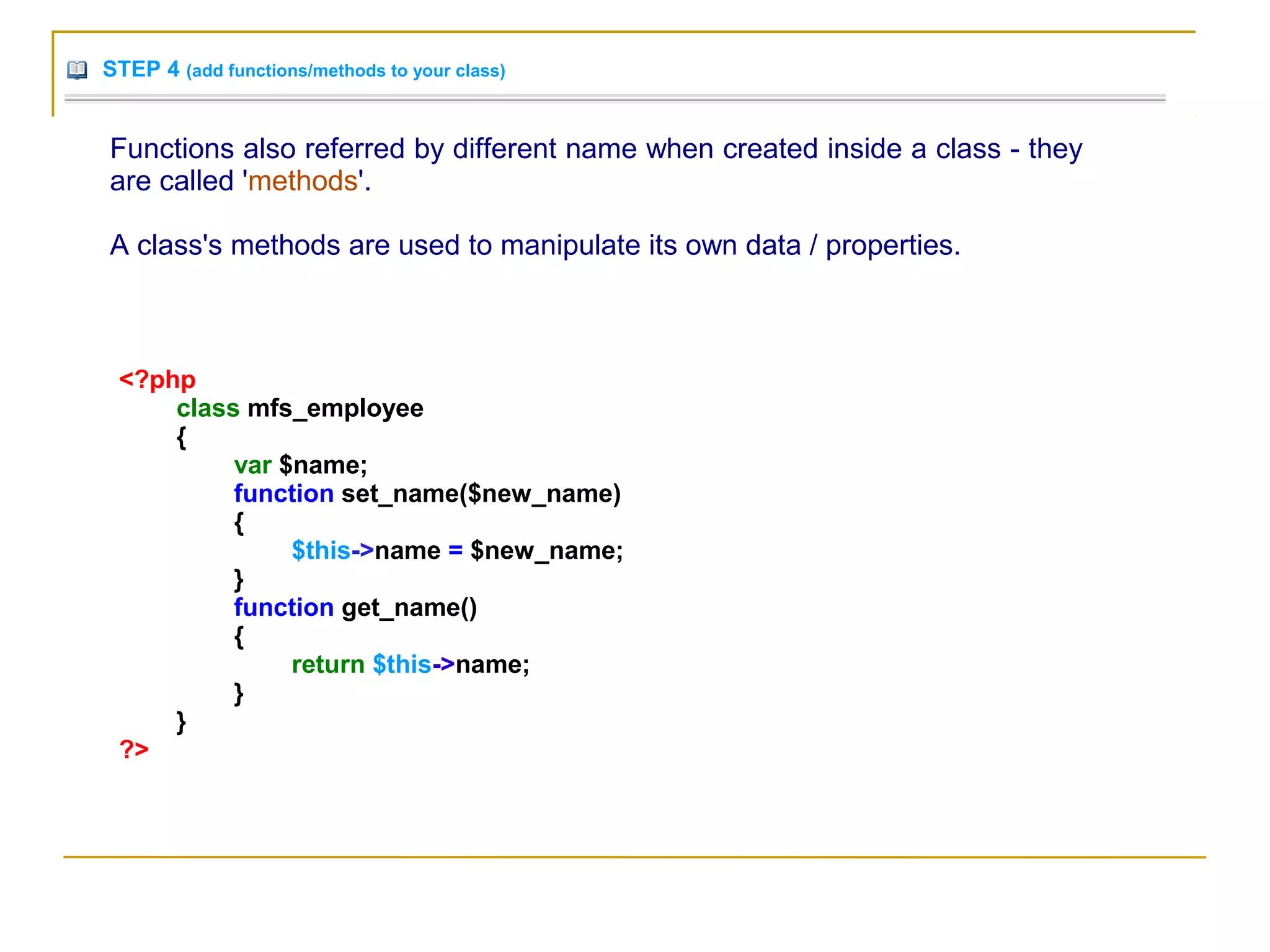
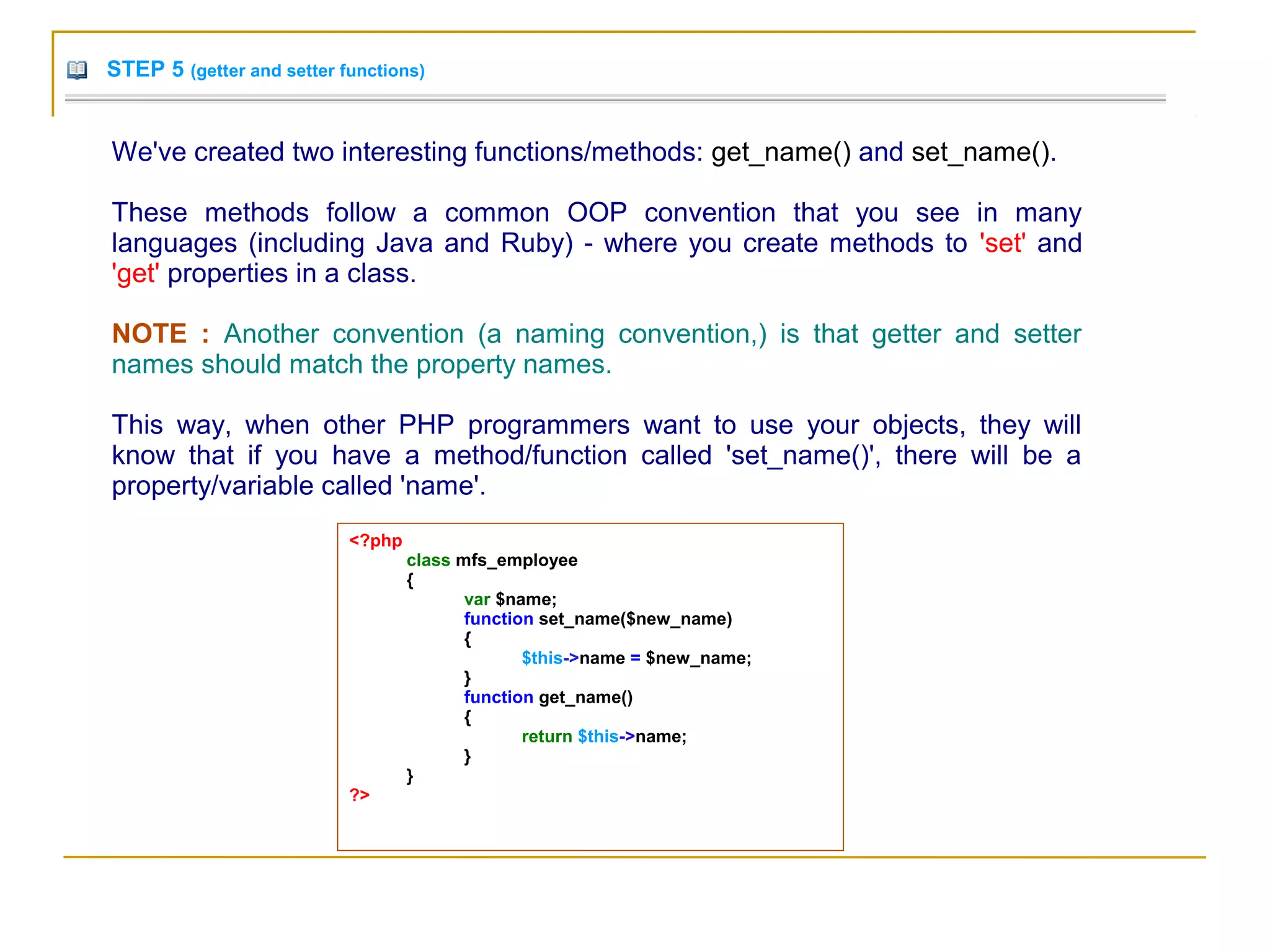
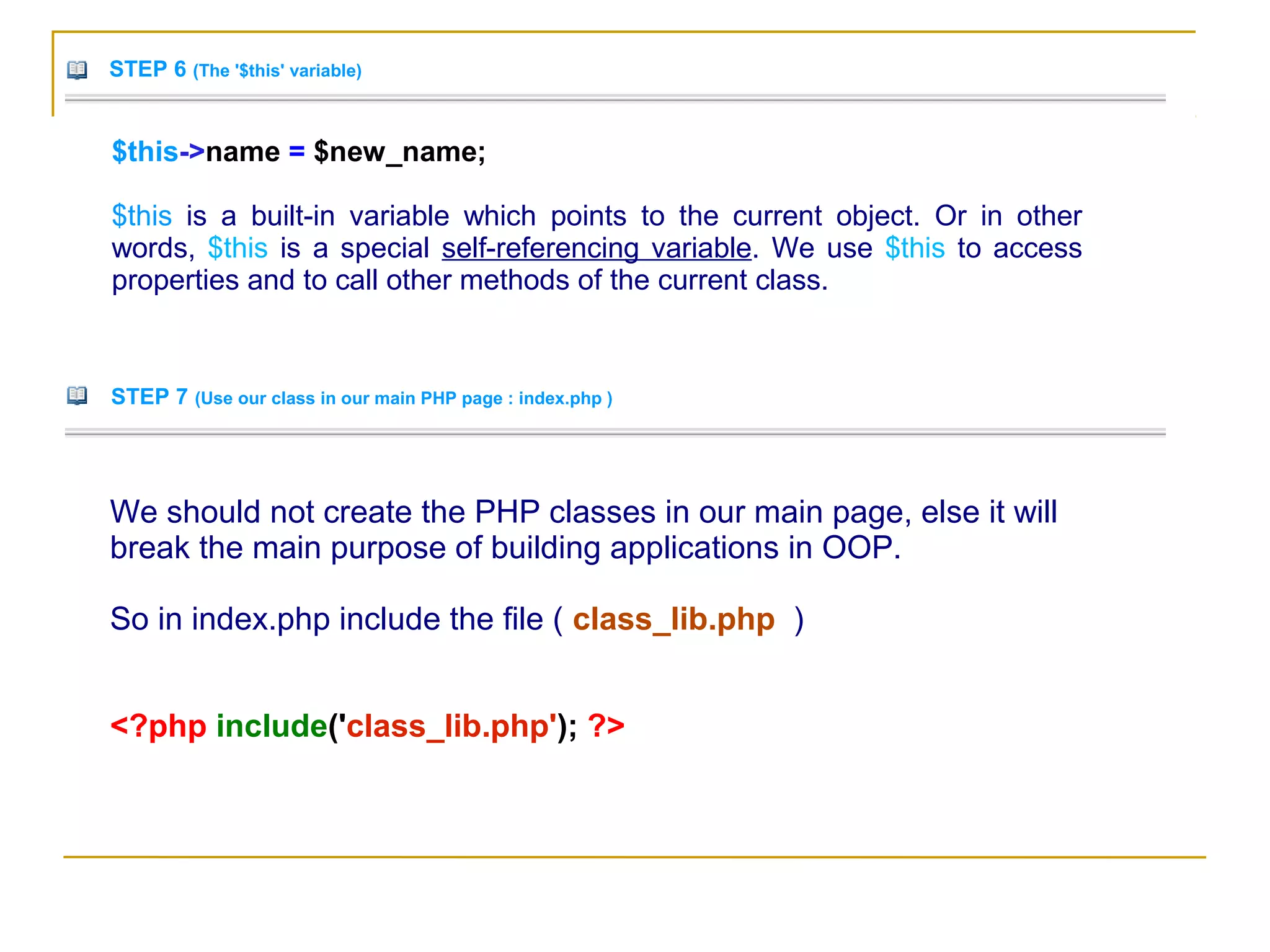
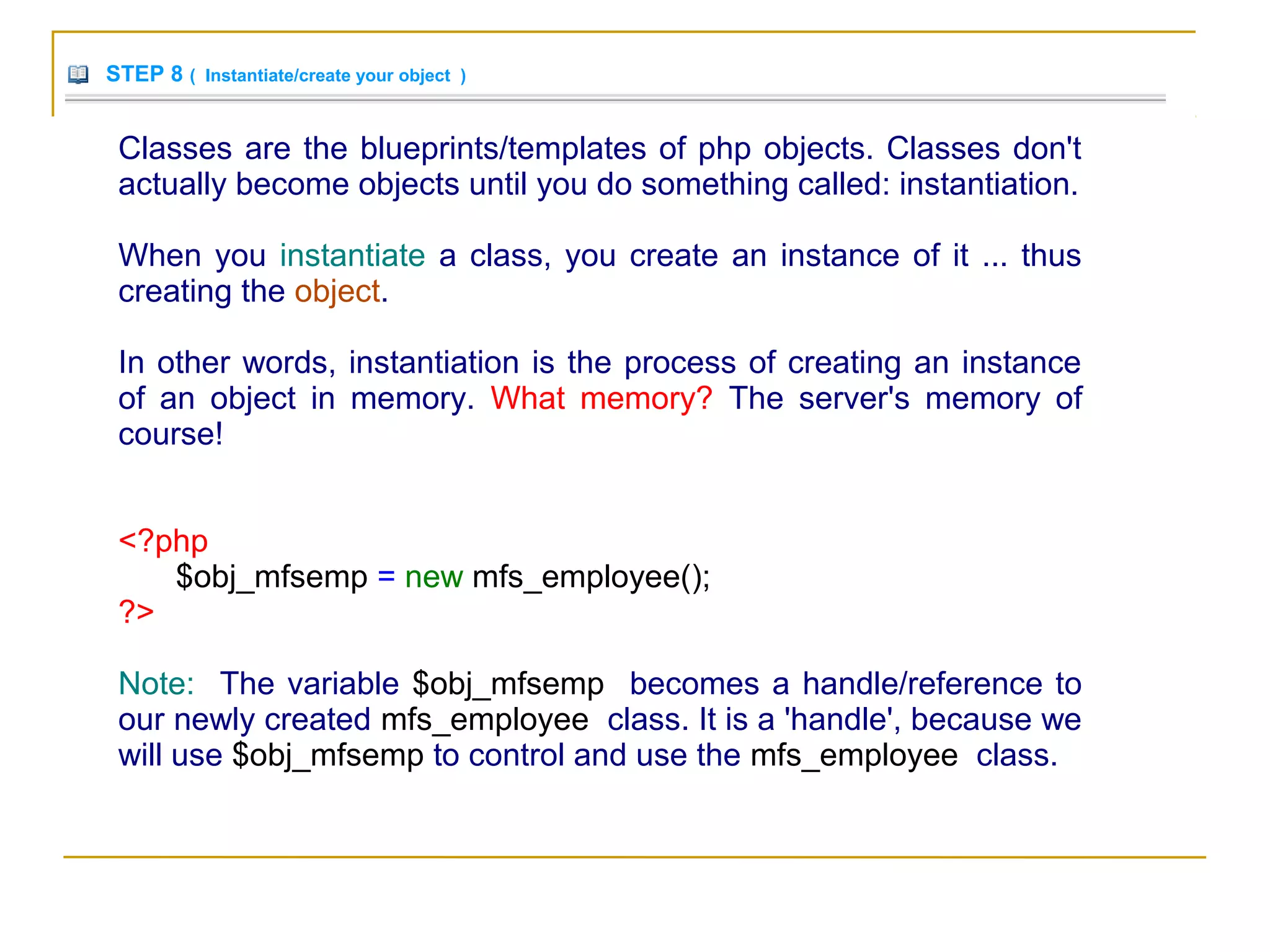
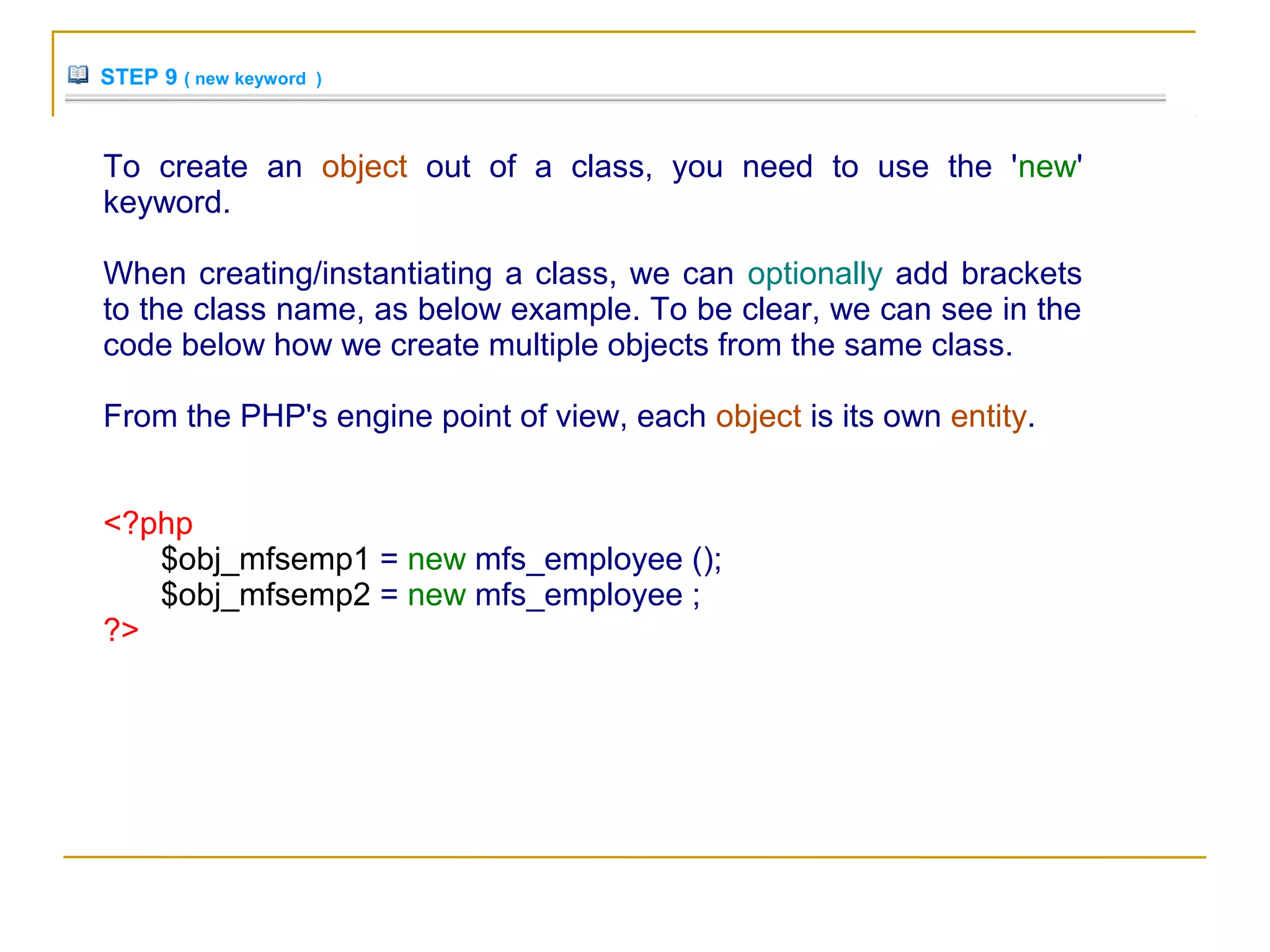
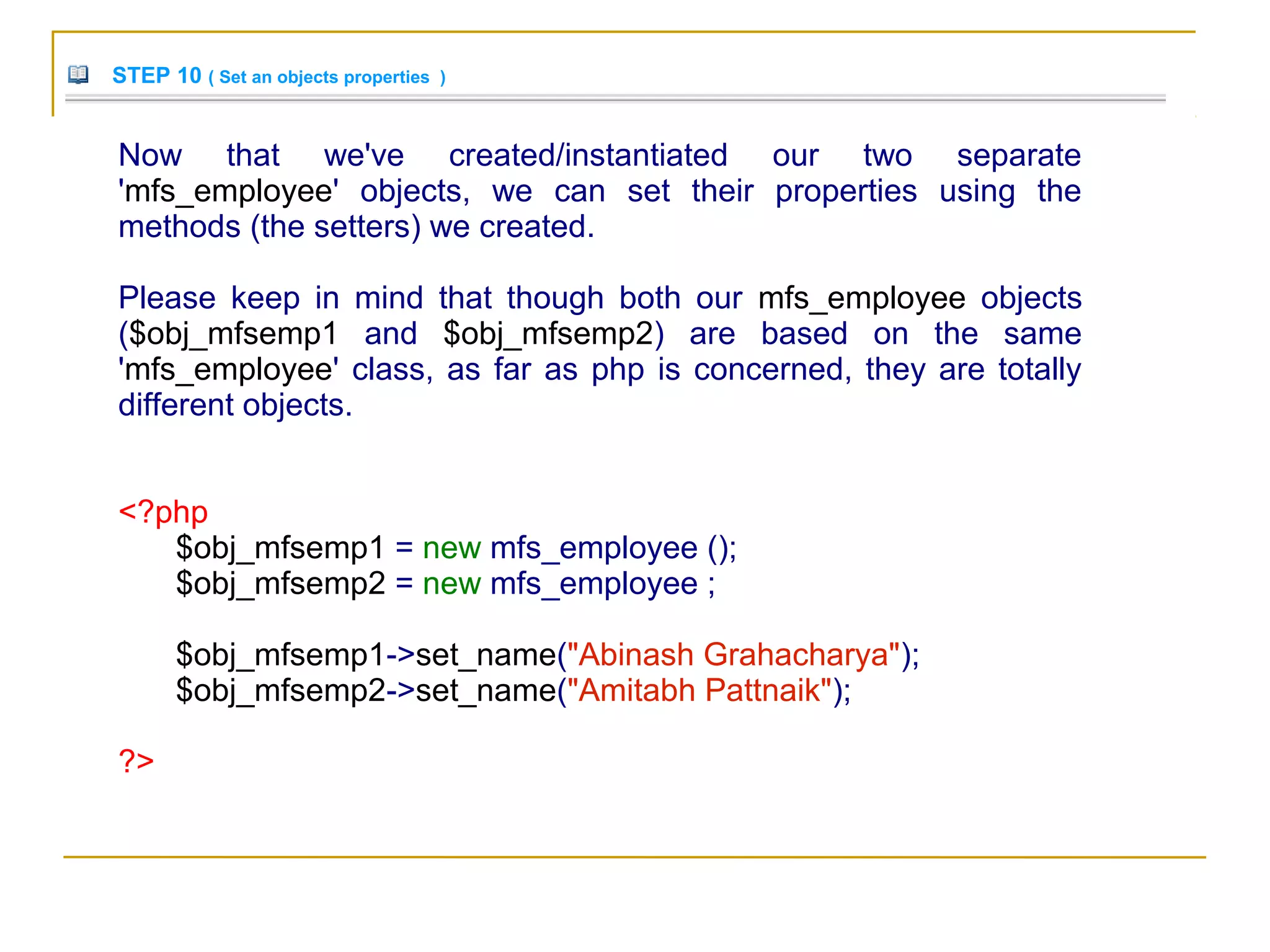

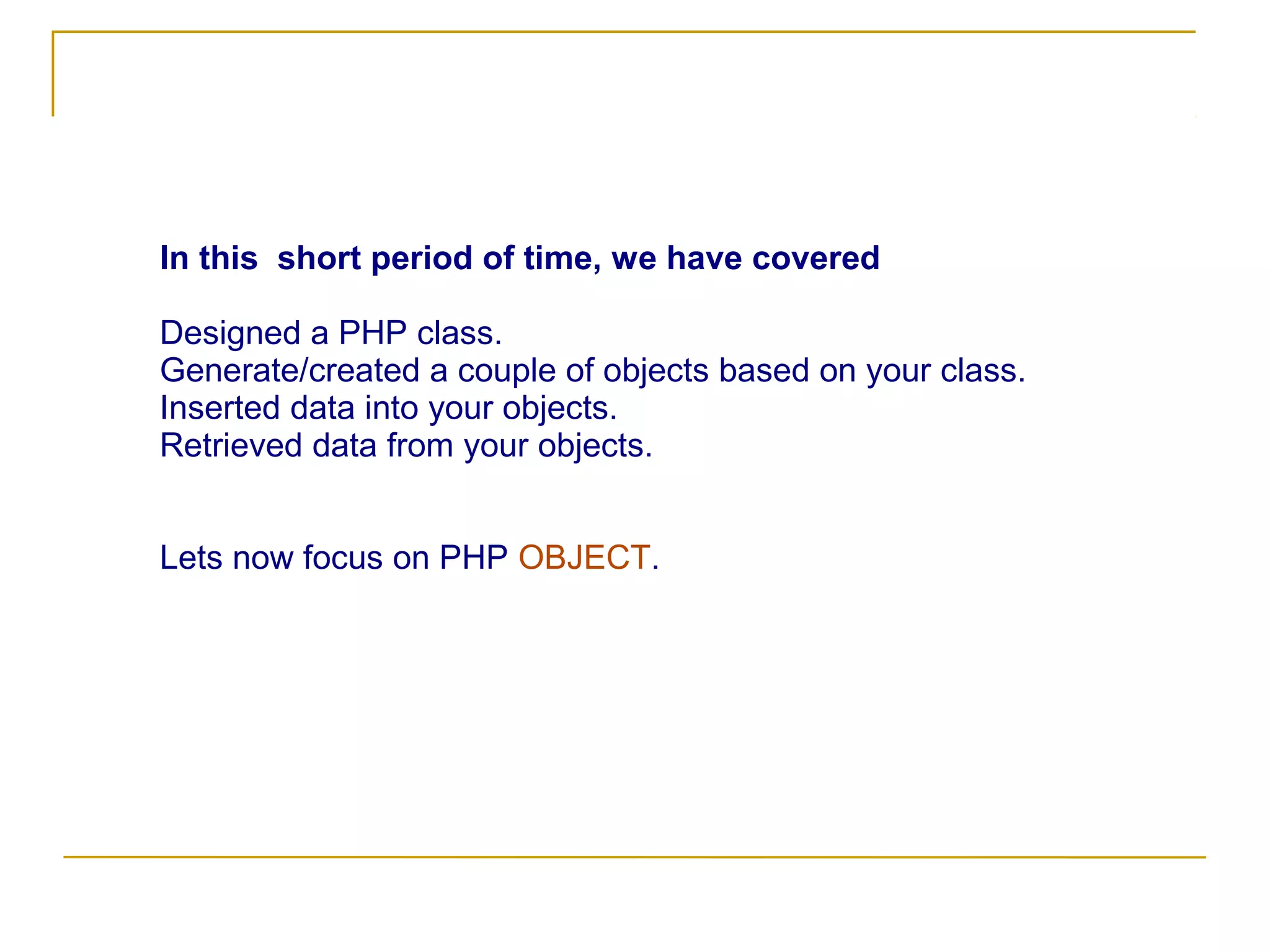
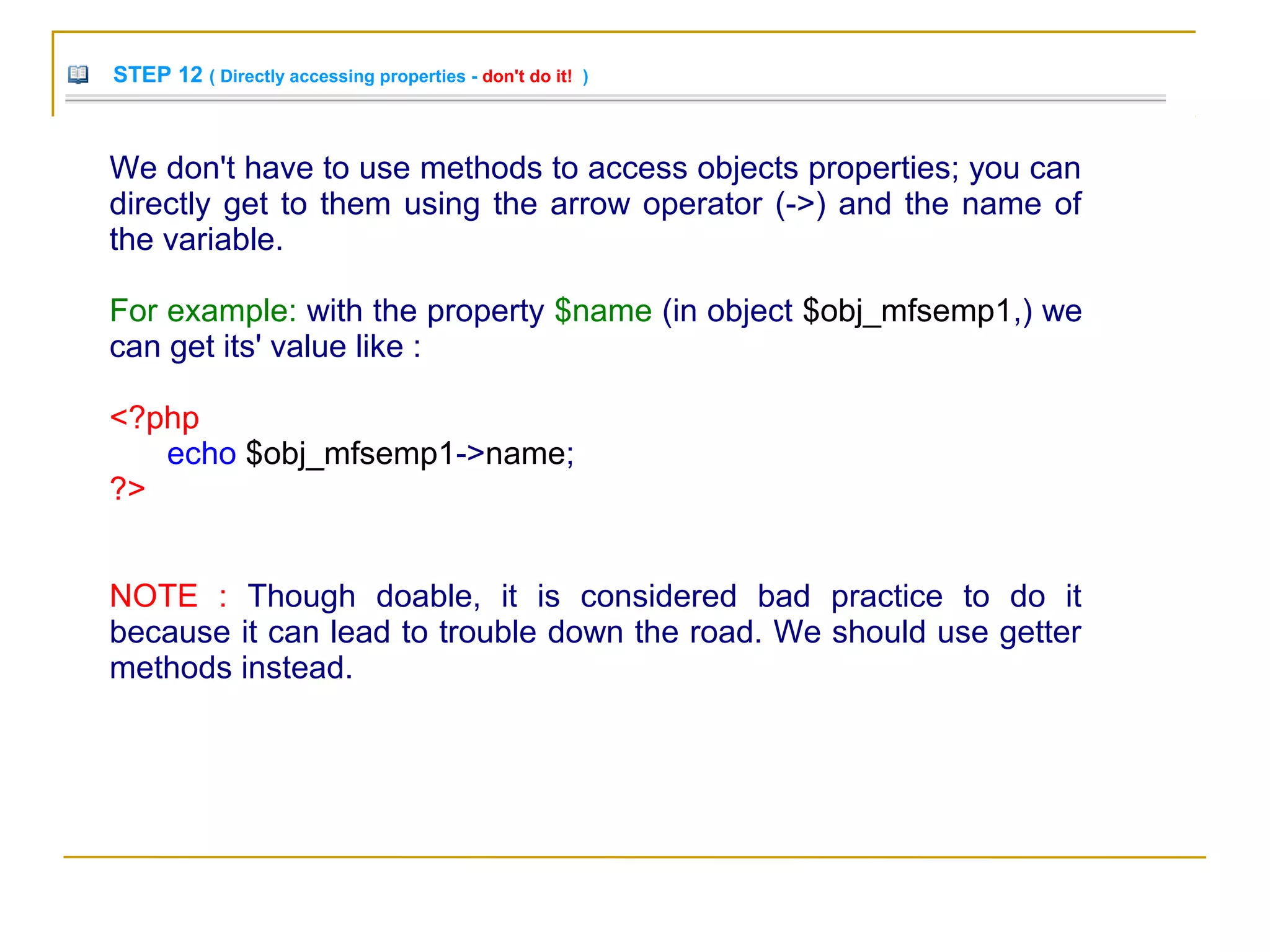
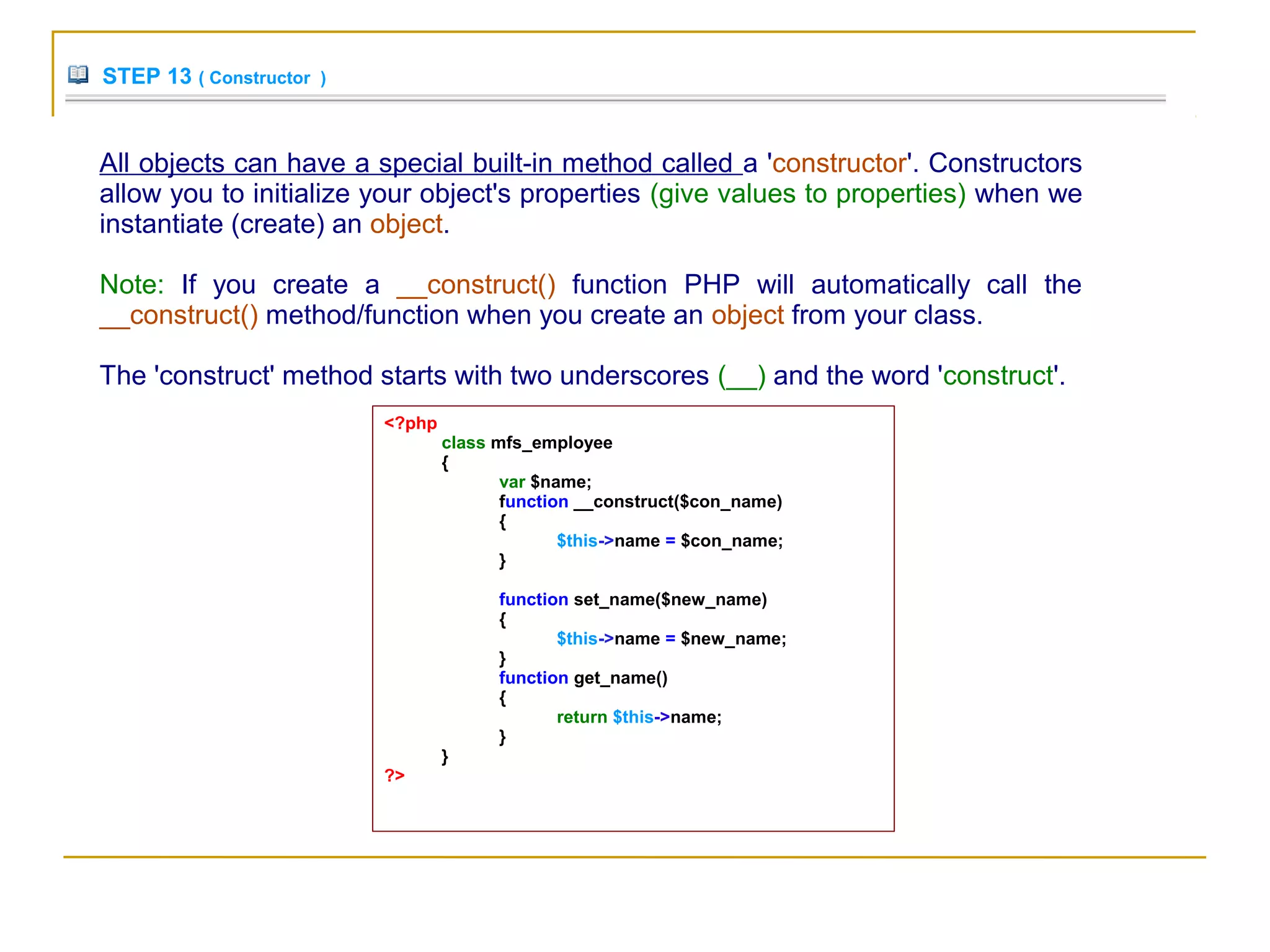
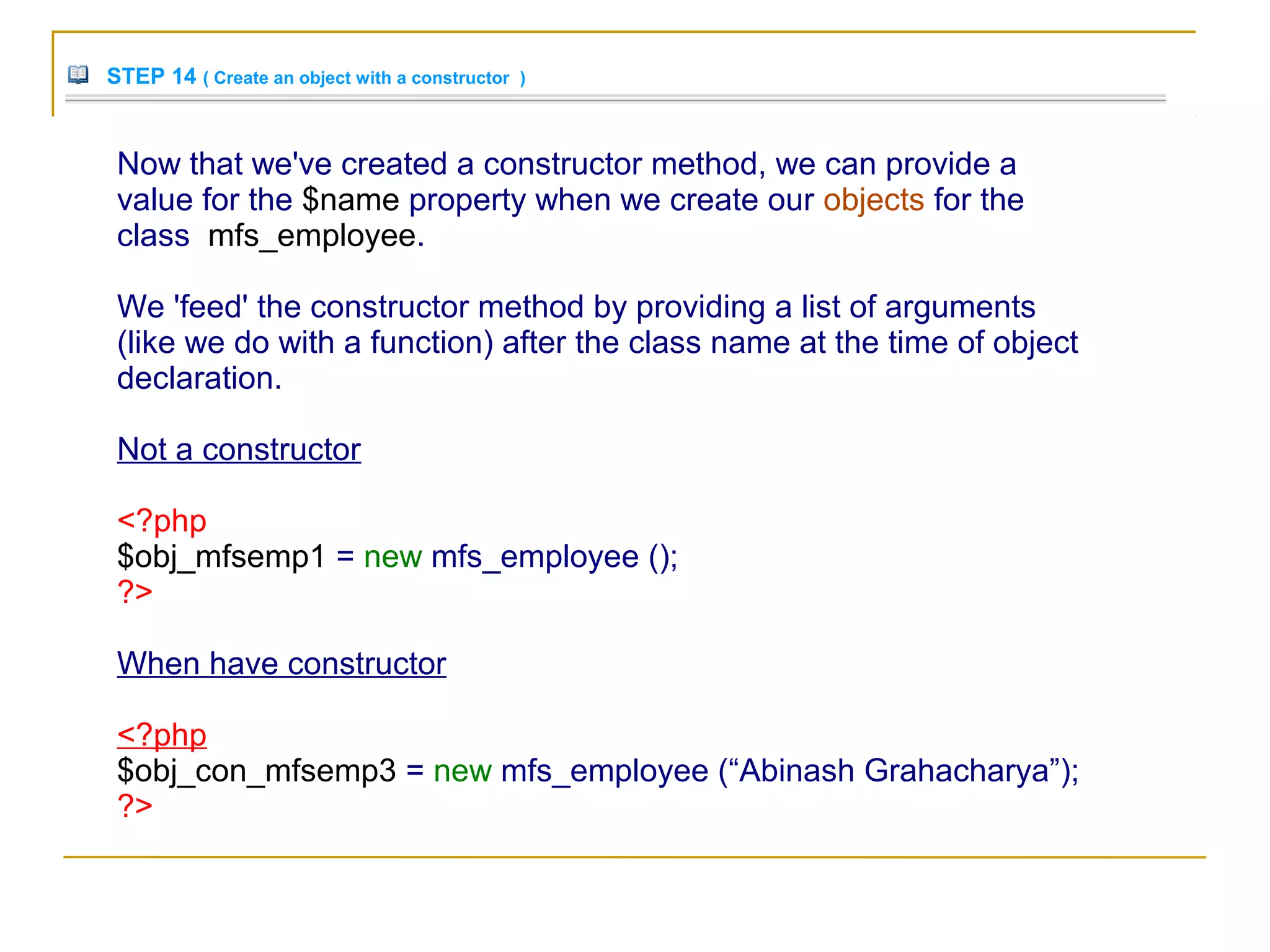
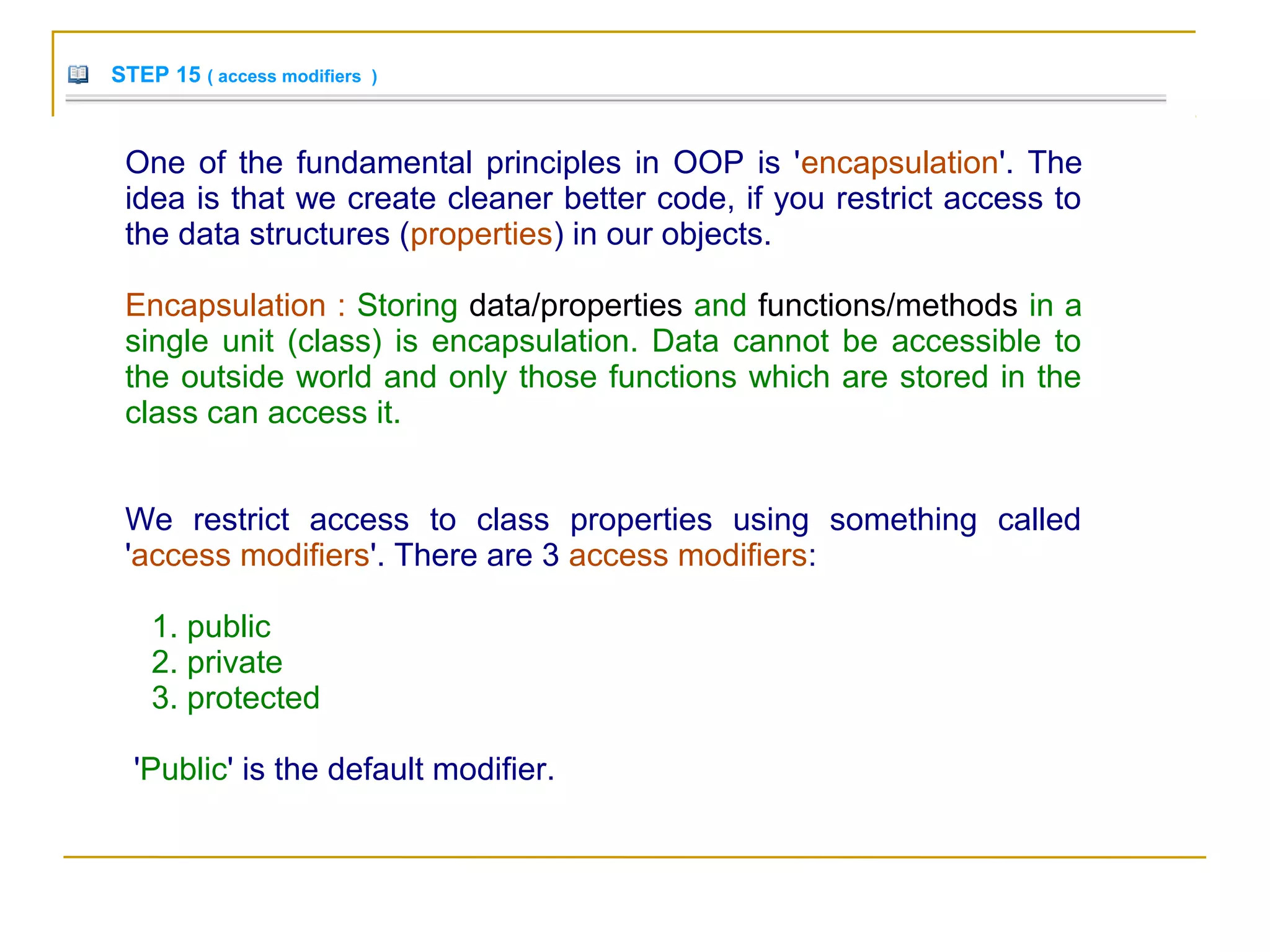
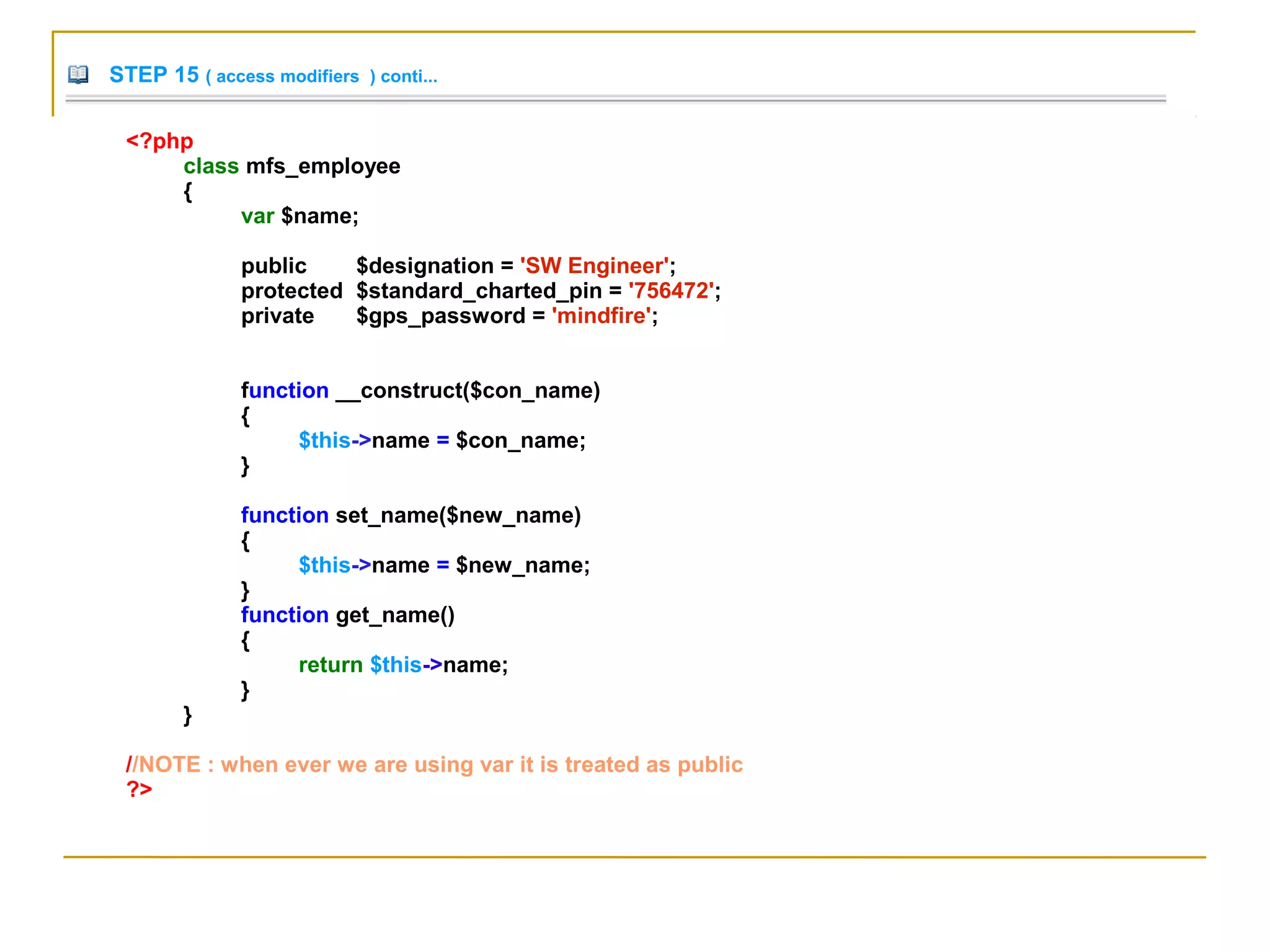
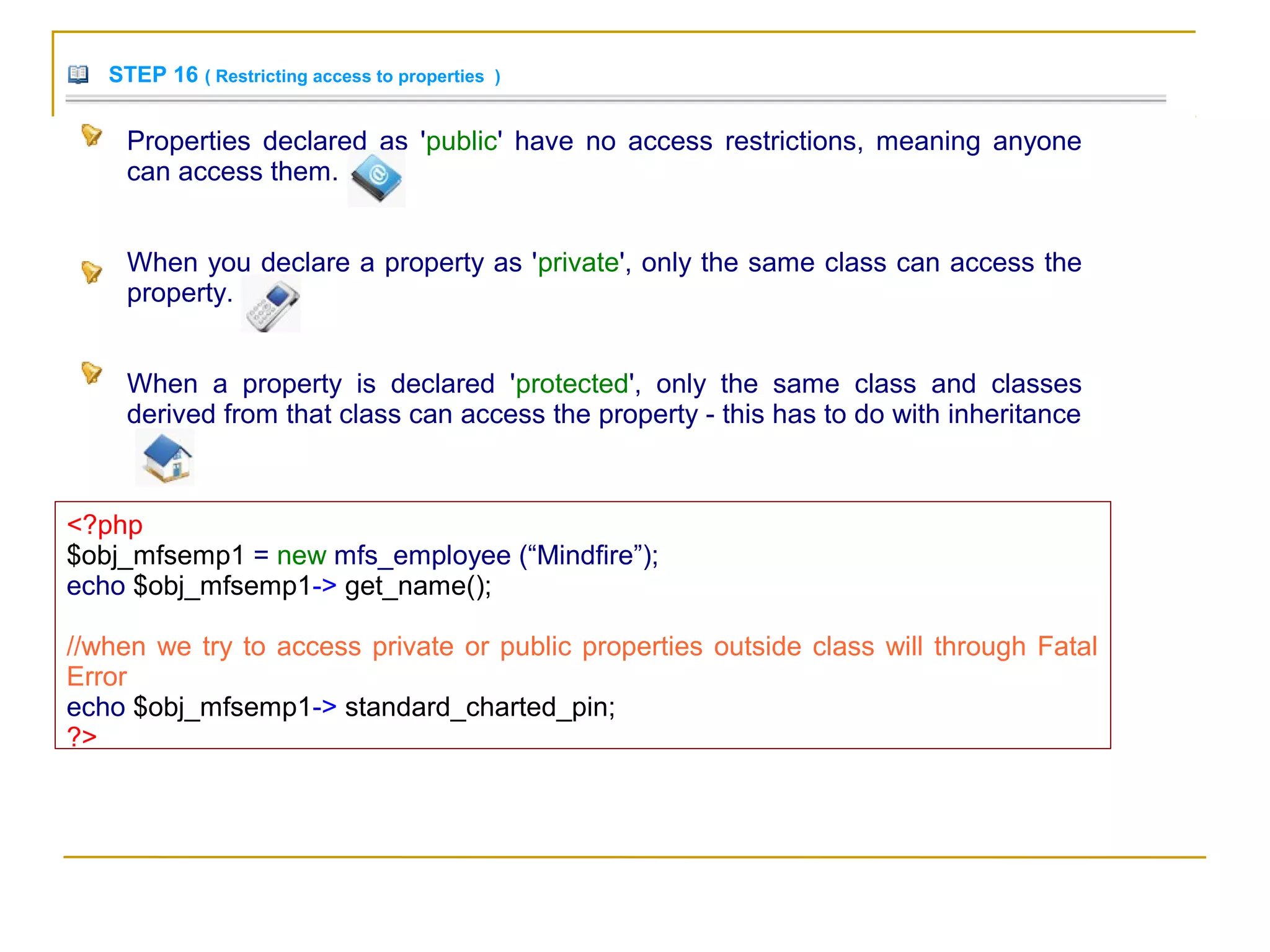
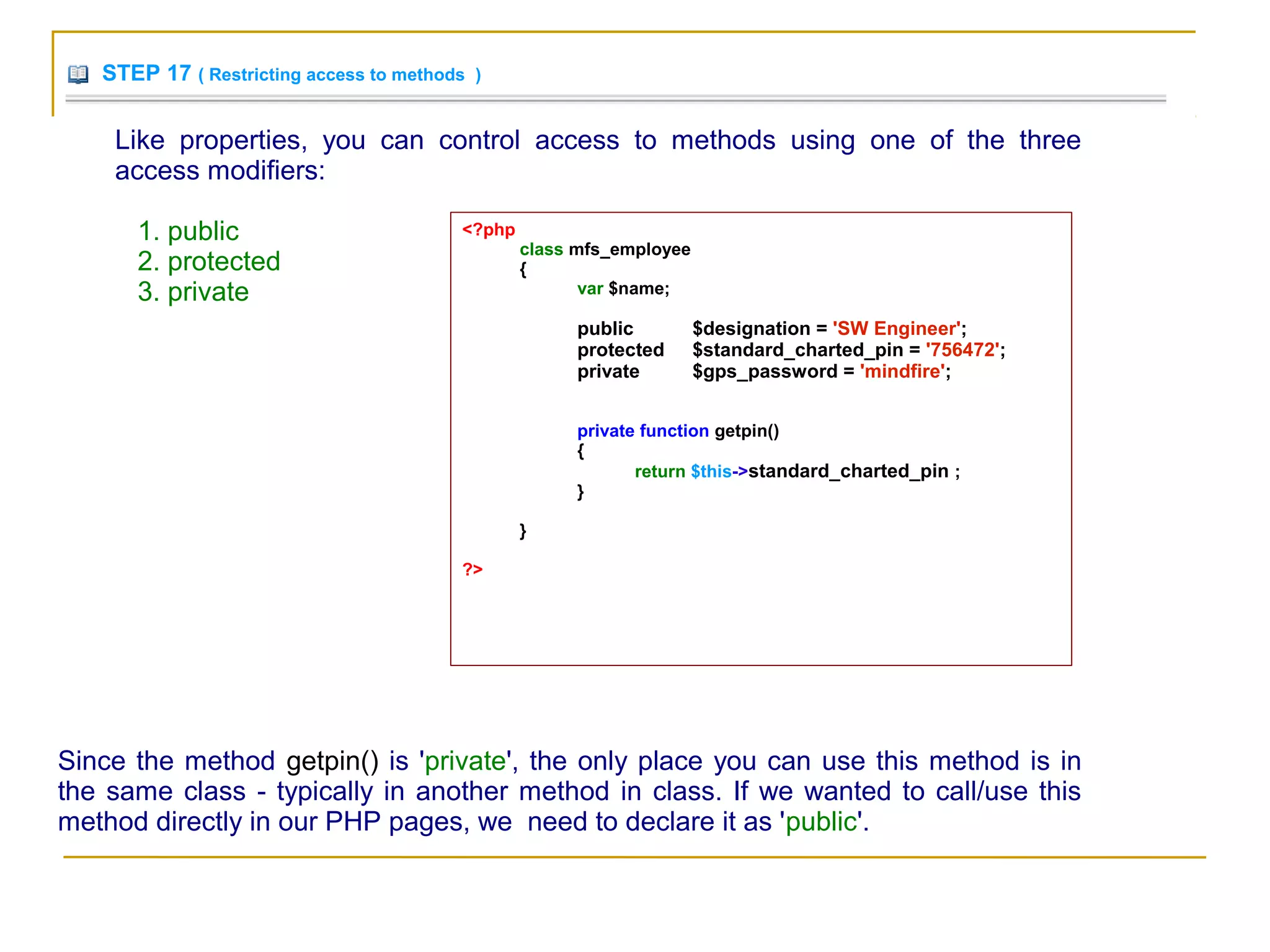



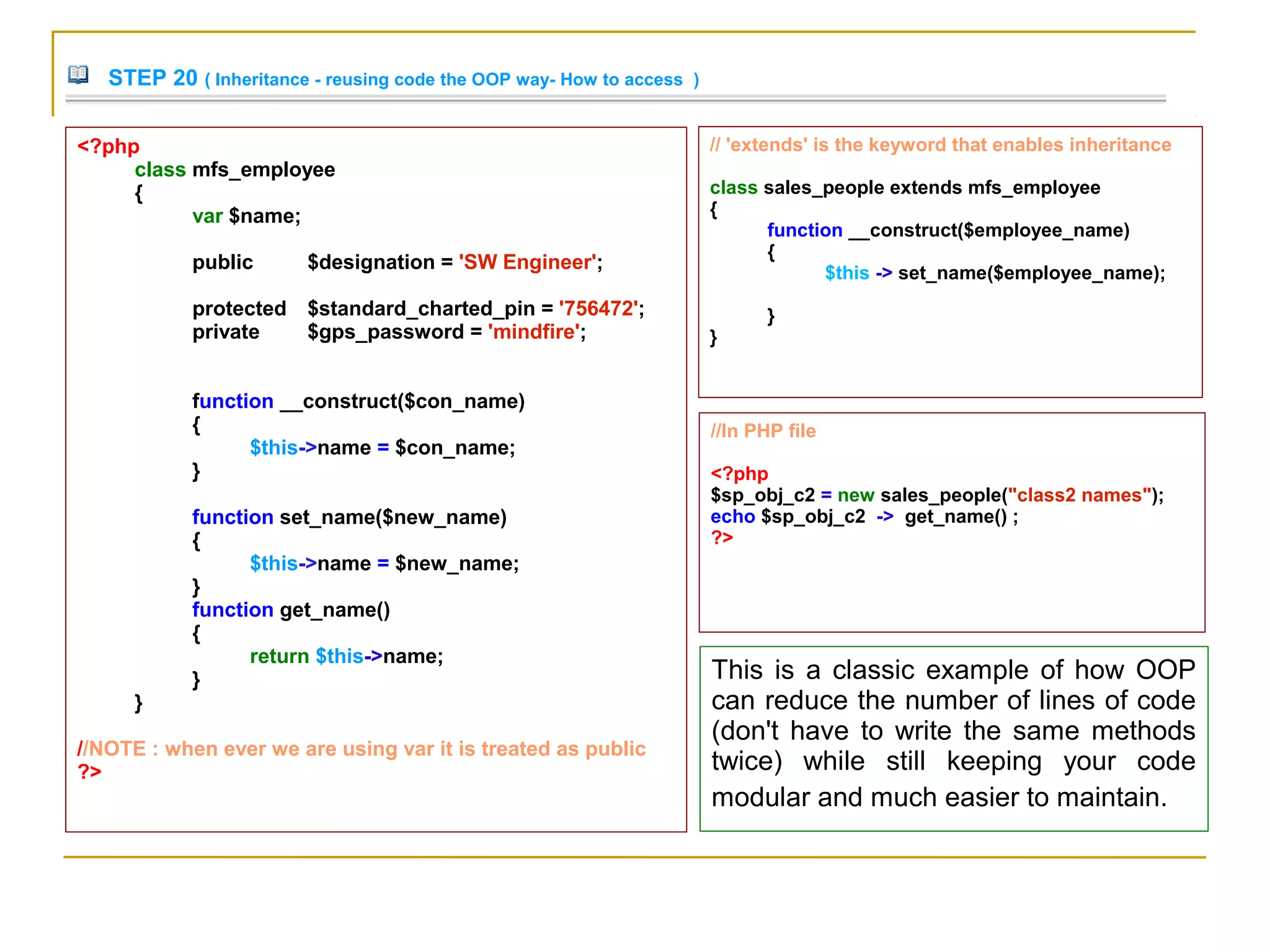
![STEP 21 ( Overriding Methods )
Sometimes (when using inheritance,) we may need to change how a
method works from the base class.
For example, let's say set_name() method in the 'sales_people' class, have
to do something different than what it does in the 'mfs_employee' class.
We have to 'override' the ''mfs_employee' classes version of set_name(),
by declaring the same method in 'sales_people'.
// 'extends' is the keyword that enables inheritance
class sales_people extends mfs_employee
{
function __construct($employee_name)
{
$this -> set_name($employee_name);
}
function set_name($new_name)
{
if ($new_name[0] == "S")
{
$this->name = $new_name;
}
}
}
//In PHP file
<?php
$sp_obj_c2 = new sales_people("class2 names");
echo $sp_obj_c2 -> get_name() ;
$sp_obj_c2 = new sales_people("So Check it");
echo $sp_obj_c2 -> get_name() ;
?>](https://image.slidesharecdn.com/oopsinphp-100203045118-phpapp01-140624054626-phpapp01/75/Basic-Oops-concept-of-PHP-25-2048.jpg)
